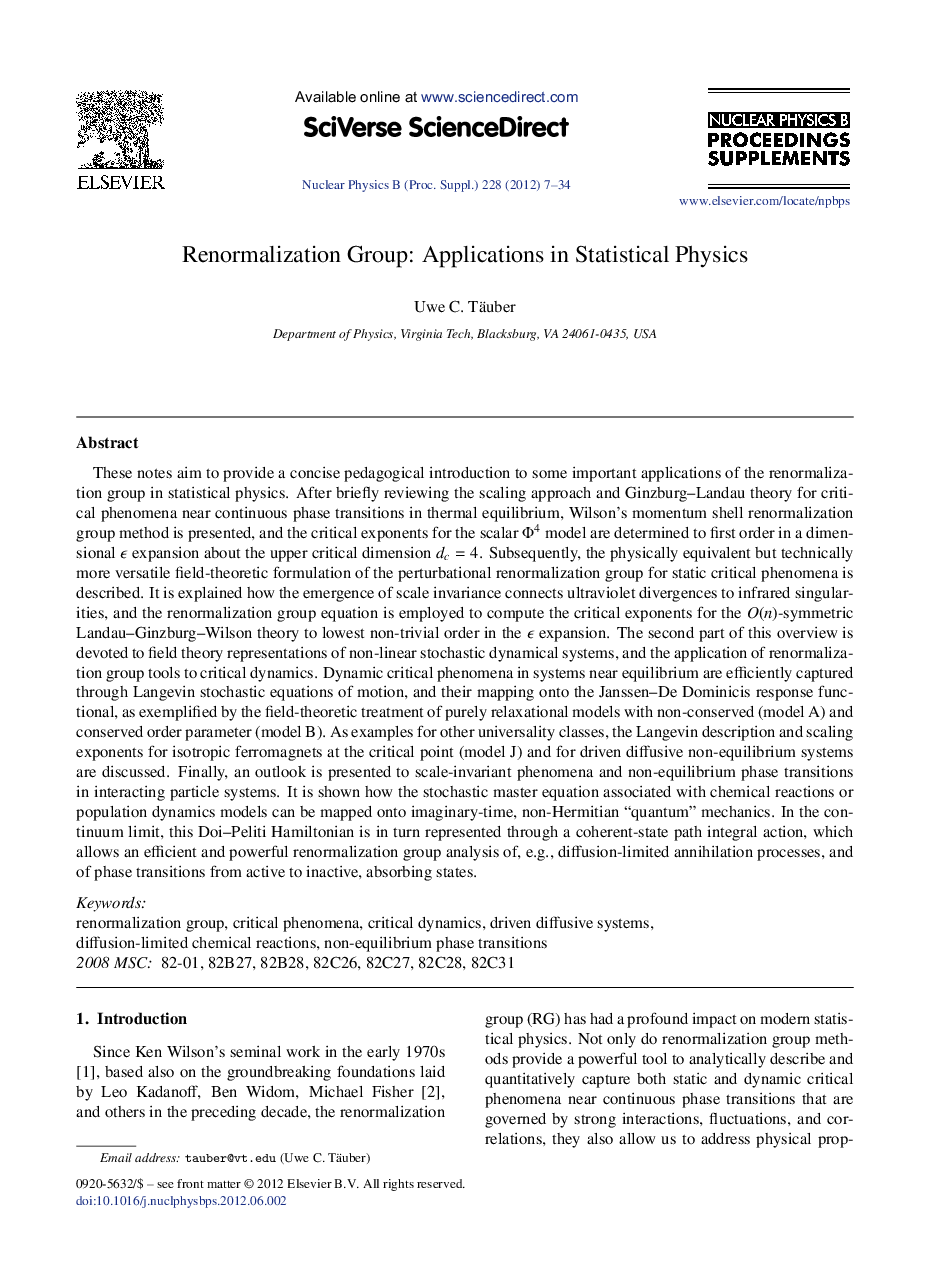| Article ID | Journal | Published Year | Pages | File Type |
|---|---|---|---|---|
| 8185510 | Nuclear Physics B - Proceedings Supplements | 2012 | 28 Pages |
Abstract
These notes aim to provide a concise pedagogical introduction to some important applications of the renormalization group in statistical physics. After briefly reviewing the scaling approach and Ginzburg-Landau theory for critical phenomena near continuous phase transitions in thermal equilibrium, Wilsonʼs momentum shell renormalization group method is presented, and the critical exponents for the scalar Φ4 model are determined to first order in a dimensional ϵ expansion about the upper critical dimension dc=4. Subsequently, the physically equivalent but technically more versatile field-theoretic formulation of the perturbational renormalization group for static critical phenomena is described. It is explained how the emergence of scale invariance connects ultraviolet divergences to infrared singularities, and the renormalization group equation is employed to compute the critical exponents for the O(n)-symmetric Landau-Ginzburg-Wilson theory to lowest non-trivial order in the ϵ expansion. The second part of this overview is devoted to field theory representations of non-linear stochastic dynamical systems, and the application of renormalization group tools to critical dynamics. Dynamic critical phenomena in systems near equilibrium are efficiently captured through Langevin stochastic equations of motion, and their mapping onto the Janssen-De Dominicis response functional, as exemplified by the field-theoretic treatment of purely relaxational models with non-conserved (model A) and conserved order parameter (model B). As examples for other universality classes, the Langevin description and scaling exponents for isotropic ferromagnets at the critical point (model J) and for driven diffusive non-equilibrium systems are discussed. Finally, an outlook is presented to scale-invariant phenomena and non-equilibrium phase transitions in interacting particle systems. It is shown how the stochastic master equation associated with chemical reactions or population dynamics models can be mapped onto imaginary-time, non-Hermitian “quantum” mechanics. In the continuum limit, this Doi-Peliti Hamiltonian is in turn represented through a coherent-state path integral action, which allows an efficient and powerful renormalization group analysis of, e.g., diffusion-limited annihilation processes, and of phase transitions from active to inactive, absorbing states.
Keywords
Related Topics
Physical Sciences and Engineering
Physics and Astronomy
Nuclear and High Energy Physics
Authors
Uwe C. Täuber,
